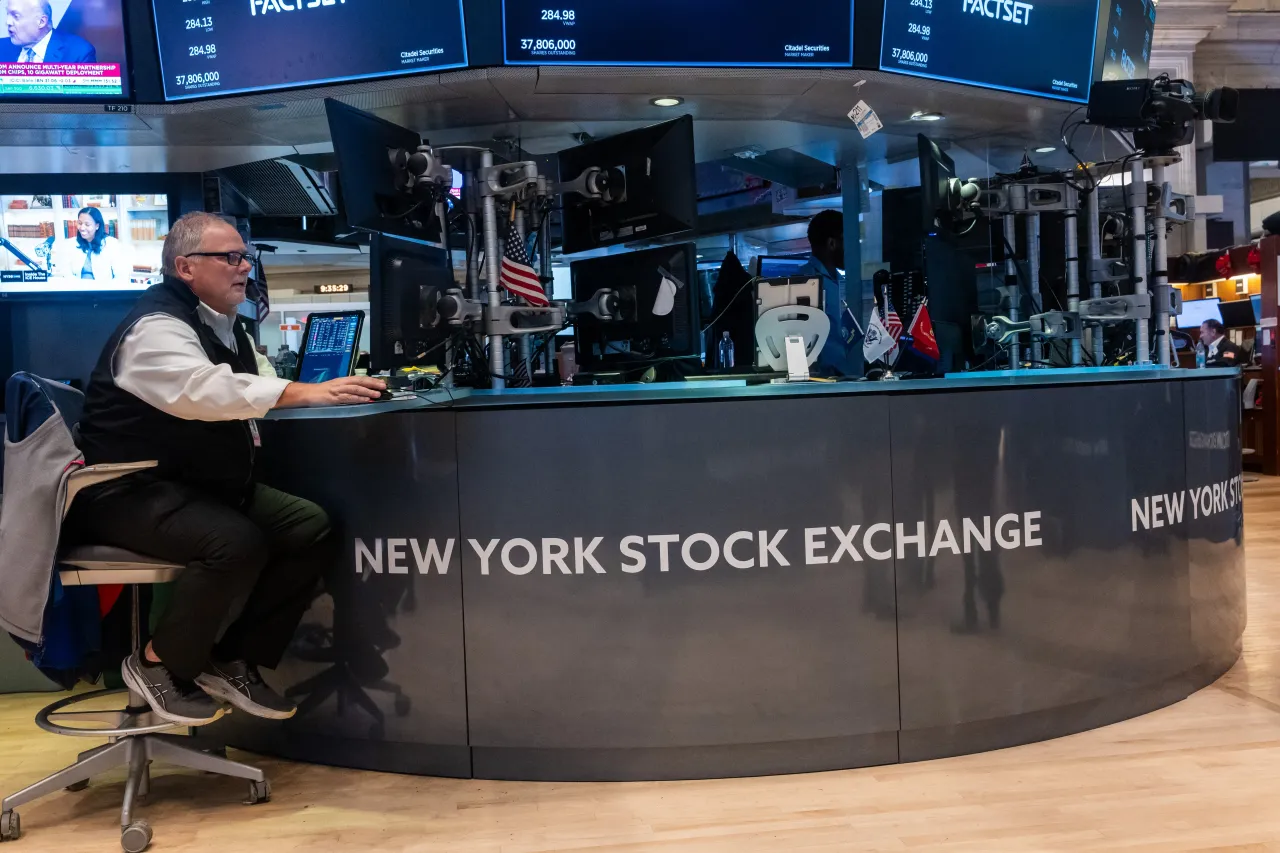Advertisement|Remove ads.
Nasdaq, S&P 500 Futures Slip On Geopolitical, Earnings Anxiety: Strategist Says Trump’s China Threats Likely A Rare-Earths Deal Ploy

U.S. stock futures slid early Tuesday after the market staged a rebound in the previous session, with the geopolitical tensions around China continuing to pose a downside risk. The Chinese Ministry of Commerce on Tuesday confirmed working-level talks between Beijing and Washington, but issued a strongly worded statement against intimidation by the U.S.
Additionally, the ongoing government shutdown, now in its 14th day, remains an undercurrent, especially as lawmakers from either side of the aisle showed a lack of resolve to clinch a deal.
The earnings season starts in earnest this week, with bank earnings beginning to roll in on Tuesday. The combined earnings of S&P 500 companies will likely grow at a year-over-year pace of 8% following an eight-quarter earnings growth streak, FactSet stated in a weekly report released on Friday. The report indicated that financials would report the fourth-highest earnings growth among the 11 S&P 500 sector classes, with consumer finance and insurance leading the way higher.
As of 2:20 a.m. ET on Tuesday, the Nasdaq 100 and Russell 2000 futures were down more than 0.70%, and the S&P futures slipped 0.5%, while the Dow futures fell a more modest 0.36%.
Buoyed by President Donald Trump's toned-down rhetoric on China and additional artificial intelligence (AI) deal announcements, stocks rebounded on Monday from last Friday’s sell-off. Barring defensive consumer staple and healthcare stocks, nine of the 11 S&P 500 sector classes advanced during the session, with IT, consumer discretionary, and communication services stocks leading the gains.
The SPDR S&P 500 ETF (SPY), an exchange-traded fund (ETF) that tracks the S&P 500 Index, rose 1.53%, and the Invesco QQQ Trust (QQQ) jumped 2.12%. The iShares Russell 2000 ETF (IWM) soared 2.79%, while the SPDR Dow Jones Industrial Average ETF Trust (DIA) added a more modest 1.28%.
WisdomTree Senior Economist Jeremy Siegel said in his weekly commentary that Trump’s most recent threat of 100% tariffs on China suggested that the president is fishing for a final deal using tariffs as bargaining chips. He also underscored the danger China poses due to its near monopoly on rare earths. “It is outrageous that we have let China refine more than 90% of the rare earths. This is a far greater threat than OPEC ever was.”
On the economic front, the National Federation of Independent Business’ (NFIB) optimism index for September is due at 6 a.m. ET. Federal Reserve Chair Jerome Powell is set to deliver a keynote speech on the U.S. economic outlook and monetary policy at the National Association for Business Economics (NABE) annual meeting in Philadelphia at 12:20 p.m. ET.
Among the other Fed speakers lined up for the day are Fed Governors Michelle Bowman (8:45 a.m. ET) and Christopher Waller (3:25 p.m. ET), and Boston Fed’s Susan Collins (3:30 p.m. ET).
Notable companies scheduled to announce their quarterly results on Tuesday include JPMorgan (JPM), Citi (C), Goldman Sachs (GS), Wells Fargo (WFC), BlackRock (BLK), Domino’s Pizza (PZZA), and Albertsons (ACI).
WisdomTree’s Siegel also expressed a preference for equities. “I’d size gold or a mix of gold and major crypto around the low single digits and cap near 10% for most investors,” he said, adding that “the primary engine of wealth creation should remain ‘stocks for the long run.’”
Crude oil futures edged lower after Monday’s gain, with the commodity trading below the $60 psychological mark. Gold futures, meanwhile, continued their incessant climb, thanks to the looming uncertainties.
The 10-year U.S. Treasury note slipped further toward the 4% mark in the Asian session after ending Monday’s session unchanged. The U.S. dollar was modestly lower against its major counterparts. Most major Asian markets moved lower on Tuesday, with the Japanese equities leading the slide as domestic traders weighed in on the U.S.-China standoff and preferred to stay on the sidelines ahead of Powell’s economic commentary.
For updates and corrections, email newsroom[at]stocktwits[dot]com.












/filters:format(webp)https://news.stocktwits-cdn.com/large_zootopia_jpg_78547b0da9.webp)
/filters:format(webp)https://st-everywhere-cms-prod.s3.us-east-1.amazonaws.com/unnamed_jpg_9dff551b50.webp)
/filters:format(webp)https://news.stocktwits-cdn.com/Getty_Images_2236688965_jpg_a4128185a6.webp)
/filters:format(webp)https://news.stocktwits-cdn.com/large_cannabis_generic_b5230b29c3.webp)
/filters:format(webp)https://news.stocktwits-cdn.com/large_Oracle_jpg_697ba9b96d.webp)
/filters:format(webp)https://news.stocktwits-cdn.com/large_Getty_Images_1445160636_jpg_9759816169.webp)
/filters:format(webp)https://news.stocktwits-cdn.com/large_Getty_Images_2246067096_jpg_17cd5dd258.webp)
/filters:format(webp)https://news.stocktwits-cdn.com/IMG_8805_JPG_6768aaedc3.webp)